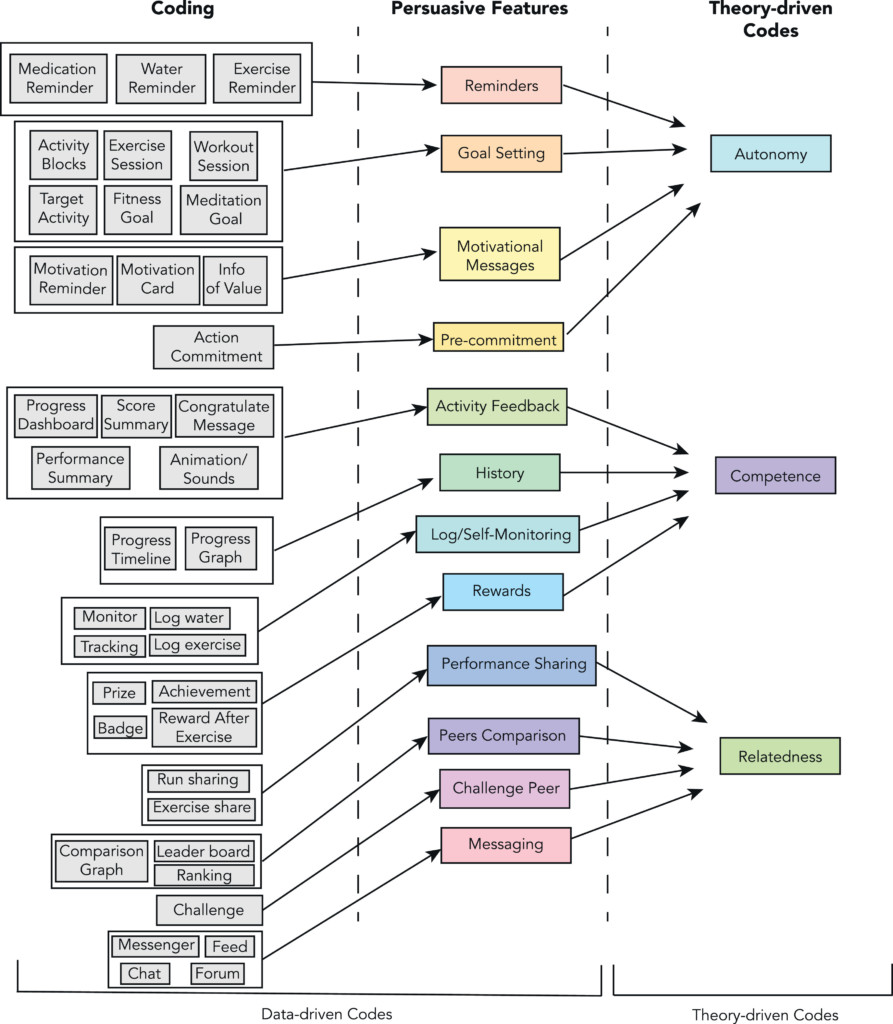By Gabriela Villalobos-Zúñiga
We, human beings, have a natural condition that pushes us to become better versions of ourselves. This improvement process has been referred to as self-realization and entails constantly pursuing what we feel we want to become. More recently, self-realization directs us to what modern psychologists call well-being: “The level to which one finds meaning in life and fulfills one’s greatest potential.” Having high levels of well-being indicates our lives progress favorably and leave us feeling satisfied and fulfilled. Researchers have found a positive association between physical activity and well-being. Therefore, by defining and pursuing fitness goals, we can pave the path for facilitating well-being. Unfortunately, many situations can separate us from reaching our physical activity goals. For instance, making bad decisions such as eating non-healthy food because it is tasty and resulting in adverse effects on our fitness level.
Fortunately, tools, methods, and books exist that can help us reach our physical activity objectives. However, these solutions require effort from the individual to incorporate the information and put it into practice.
Then if we look at the technology domain, we find another approach that offers support to reach fitness goals. These are behavior change apps, which are intentionally designed “to foster and assist behavior change, and sustainment.” Behavior change apps are created to help us develop healthy eating routines, keep a diet, lose weight, and practice some sport or exercise.
The question is: Which should be the best way to design these apps? Which should be the first place to look on? Are there any guidelines?
Theoretical Foundation and Taxonomy
Looking for guidance on human motivation theories is a promising approach. We know that some behavior change apps receive inspiration and support from psychological theories (like Happify and Fabulous), while others lack theoretical support. Having a theoretical foundation provides guidance on what behavioral outcomes to expect in response to a particular stimulus; this, in consequence, leads to more robust designs and more effective apps and facilitates outcome replicability.
In our research, we take as a foundation the human motivation theory named Self-Determination Theory (SDT). The SDT states that human beings have three basic psychological needs (BPNs):
- Competence or the feeling of being confident and effective at the target activity;
- Relatedness or feeling care for others, or to feel cared by others;
- Autonomy or experiencing self-endorsement and ownership of their actions.
When these psychological needs are satisfied, the individual experiences states of high-quality motivation, performance, and well-being.
With a theoretical framework established, we looked at how the SDT can inform the design of behavior change apps. We asked ourselves: “Can psychological theories suggest characteristics that behavior change apps need to possess to support behavior change interventions? Do behavior change apps on the market possess these?”
We conducted a systematic review and analysis of the Apple App Store to answer these questions (the paper shows more details on the process). We identified apps aiming at supporting users who were willing to change their behavior. Then, we collected “top-rated” apps guaranteeing a cross-section of popular apps. Finally, each app was installed on a device and tested for several hours across multiple weeks. Next, we performed a functional decomposition to extract the apps’ main features relevant to behavior change and coded the app features. Next, we coded the sub-systems identified during the functional decomposition process using a procedure adapted from thematic analysis. The analysis process involved two stages. First, we grouped the sub-systems that provided the same basic functionality. These formed the initial code-book. In the second stage, overarching themes evolved, and these were patterns under which we organized our Taxonomy of Behavior Change Features (Fig. 1).

Figure 1: Coding Process showing the classification of Persuasive Features.
For example, the functions that provided mechanisms to remind taking medication or performing an exercise formed the theme “Reminders”. We clustered codes where we had evidence from the literature that these supported the behavior change process. The following are some features that support the BPNs (Look for more examples in the paper).
Features That Support Autonomy, Competence, and Relatedness
Reminders are usually implemented as a message or push notification delivered around the time the user should perform a specific activity (Fig. 2). The message delivery times are defined by the user or identified by the app.

Figure 2: Reminders. On the left set by the user, on the right set by the app.
This feature provides the user with information about how the task was performed in a given session, and it might also present the user with details on the overall progress towards completing a predefined set of activities (Fig. 3). When this feedback is positive, showing growth or improvement trends, it can enhance an individual’s sense of Competence.

Figure 3: Feedback features.
This feature enables users to share their achievements with their peers (e.g., through social networks, e-mail, instant messaging, or text messages; Fig. 4). Typically, the user shares a recently completed task or challenge score.

Figure 4: Peers Comparison features.
Employing the Taxonomy of App Features
In the following paragraphs, I will show how this taxonomy can be employed as a guide for designing theory-informed behavior change apps.
Based on the taxonomy, we aimed to design a steps-tracking app with minimal functionalities that support the BPNs as posited by the SDT. We selected the feature set of Goal Setting, History, and Peers Comparison. Our app included: 1) a weekly goal-setting feature (Fig. 5) to support Autonomy, allowing participants to choose their goals, 2) a history feature to support Competence (Fig. 6) by enabling them to reflect on their past days’ performance, 3) a peers comparison feature to support Relatedness (Fig. 7) by allowing participants the functionality to connect and relate to other participants.

Figure 5: Goal Setting feature design.

Figure 6. History feature design.

Figure 7: Peers Comparison feature design.
The taxonomy serves as a guide and does not guarantee that the way the features are designed and implemented will support the BPNs. Therefore, it is necessary to understand how people perceive these features. We conducted a 4-week field study in the following research study, where 49 participants interacted with the steps-tracking app. They filled a diary, and we conducted 15 interviews. We then analyzed the data through affinity diagramming.
Concerning Autonomy, our results show that users’ perceptions indicate they understood the purpose of the goal-setting feature. For example, they related the feature with feelings of being in control of their goal and having decision power. We also captured perceptions about the emotional spectrum; people felt interested in the activity.
Concerning Competence, we captured perceptions of self-evaluation. For example, participants felt they were making progress when looking at the history feature. Also, we captured perceptions of empowerment when they said they felt strong while walking. And hedonic aspects, such as feeling bad when they had walked little steps.
Concerning Relatedness, we captured perceptions of companionship when participants expressed they were not feeling alone. We gathered perceptions of comparison and competition when we noticed that participants were looking at other users’ steps and comparing themselves. Finally, we collected perceptions of curiosity, for example, when they questioned what others might have been doing.
This study demonstrated that the way the features in this app were designed, supported the BPNs and showed a critical step towards designing theory-informed behavior change apps. Future works should continue exploring how different implementations yield various behavioral outcomes, and this quest has just started!
This article was edited by Mariliis Öeren.


